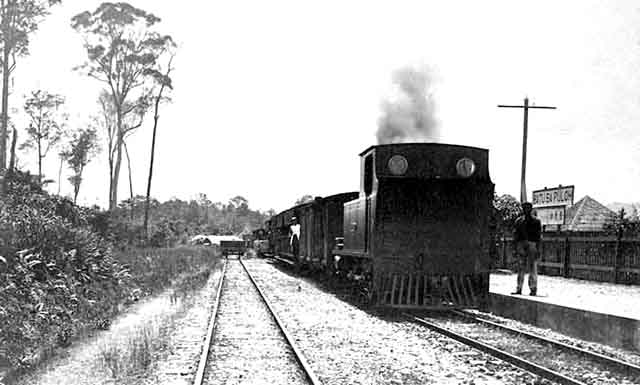
Sarawak Government Railway
Construction work started in 1911 with a Bagnall 0-4-0ST named IDIOT and in late 1913 the second-hand Peckett 0-4-0ST JEAN arrived from Bristol Carriage and Wagon Works to assist. The first section from Kuching terminus to Batu Tiga station via Green Road station opened on 1st August 1915, by which time the two 4-4-0T locomotives named BULAN and BINTANG had arrived. A third 4-4-0T had been ordered but this was cancelled due to a downturn in the teak trade. It had been named Hata Hari but remained in storage at Pecketts until 1927 when it was modified and sold to New Zealand where it now resides on the Bay of Islands Railway with the name Gabriel. The second section from Batu Tiga via Batu Lima station to Batu Tujoh station was opened by the end of the year and in 1916 it had reached the country terminus at Batu Sa Puloh. Official opening was on 9th April 1916 with 5 mixed trains per day each way, journey times being 35 minutes.
The railway operated at a profit until 1929 when a new tarmac road was laid alongside the line and soon hordes of homemade buses and lorries started eating into the railways traffic and by 1931 the railway reported a loss of over 1 million Straits Dollars. At the same time the Sadong colliery which had been supplying coal closed down and on 28th February 1933 the line was officially closed, though it did see some use by ballast trains running from the tenth mile quarries to the airport construction site near the 7th mile.
In 1915 the Sarawak Government Railway had been opened to the 3rd Mile and was in due course extended to the 10th. In its heyday there were five trains in either direction propelled by three locomotives and observing a speed which precluded any possibility of mishap. There was an ugly attempt at sabotage in 1917 when some miscreant spread fat on the rails at the 7th Mile incline and nearly brought traffic to a standstill, but in June, 1920 occurred Sarawak's only railway catastrophe, when the up 11.30 a.m. passenger train collided head-on with a down ballast train outside the Kuching Central Station. The guard of the ballast train was badly shaken, and the two locomotives were only with difficulty *disentangled.

Above: A Peckett 4-4-0T at Batu Sa Puloh with a mixed train for Kuching.
Below: An 0-4-0ST with a ballast train from the 10th mile quarry at the 7th mile station. This has been identified as a Peckett product so is JEAN. Courtesy UK National Archives.
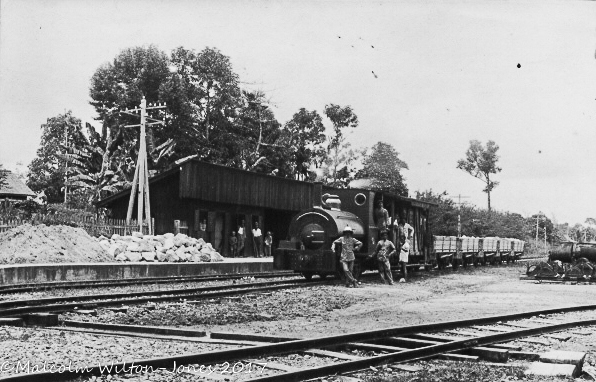
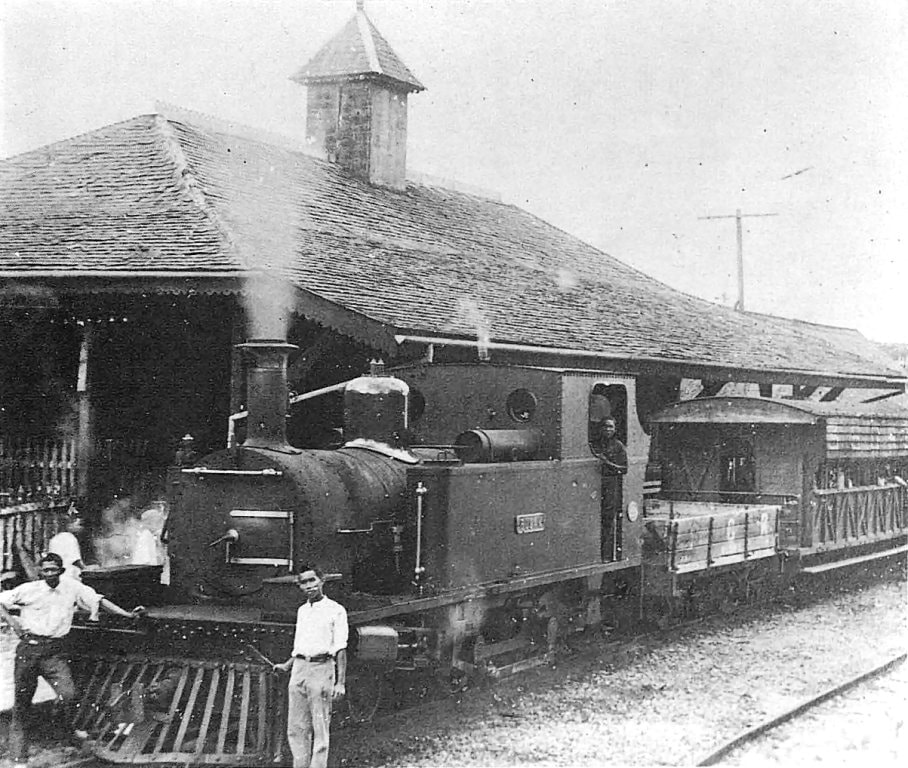
Above: Bulan at Kuching station.
|
Manufacturer |
Works |
Year |
Gauge |
Type |
Cylinders |
Drivers |
Name |
|
|
Bagnall |
1756 |
2/1905 |
3' 0" |
0-4-0ST |
6" x 9" |
1' 67/8" |
IDIOT |
To Bowes Scott & Western Ltd > Sarawak Government, Borneo. |
|
Peckett |
1284 |
1912 |
Metre |
0-4-0ST |
|
|
JEAN |
> Lysaght's Scunthorpe Steelworks,1912 > Bristol Wagon & Carriage works > Regauged by Peckett & resold to Borneo Co. for Sarawak, 1913. |
|
Peckett |
1362 |
1914 |
Metre |
4-4-0T |
12" x 18" o |
|
BULAN |
|
|
Peckett |
1363 |
1914 |
Metre |
4-4-0T |
12" x 18" o |
|
BINTANG |
|
The next article is extracted from the Industrial Railway Society as are the two pictures which follow.
SARAWAK GOVERNMENT RAILWAY
This metre gauge railway which started off as a passenger line but seems to have finished up as an industrial one! Track-laying began in 1911 with a "light locomotive" quaintly named IDIOT, and although twenty-seven miles were surveyed only ten were built. Three Peckett locomotives arrived later - a small 0−4−0ST, JEAN, and two 10−ton 4−4−0 side tanks, BULAN (moon) and BINTANG (star). (These Peckett locomotives were, respectively, 1284 of 1912, 1362 of 1914, and 1363 of 1914. The former had in fact worked as a 3ft gauge locomotive at John Lysaght's steelworks at Scunthorpe, Lines., from June 1912 to March 1913; it was regauged by Peckett and resold in September 1913 to the Bristol Wagon & Carriage Works Co. Ltd. for The Borneo Co. Ltd. - Hon. Eds.) The official opening took place on 1st August 1915 but by January 1931, when the third Rajah ordered its general closure, the Railway had lost no less than 1,063,760 dollars (at 2s 4d to the dollar). It was used on and off (the Japanese took it over during the Second World War) for hauling stone from the quarry at Mile 10. Diesel locomotives were employed latterly, and the final closure came in 1947. What was left of the line was sold for scrap in Singapore in 1959. The passenger rolling stock (1st and 2nd class with wooden seats) came second-hand from Burma, and the goods wagons second-hand from the Federated Malay States Railway.
There is a story (probably apocryphal) told about the second Rajah, who evolved the scheme, that when in England on leave in 1907 he approached the Board of the Great Western Railway for advice. However, when the Chief Engineer heard that the narrow gauge railway was to be only ten miles long initially, he suggested that the Rajah would be better off going to Gamages!
*Peckett works list shows 1284 as an 0-4-0ST named Jean sold to Lysaght in 1912 then via the Bristol Carriage and Wagon Works back to Peckett who sold it to the Borneo Co for Sarawak.
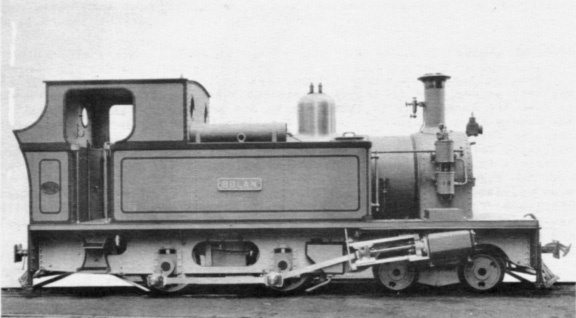
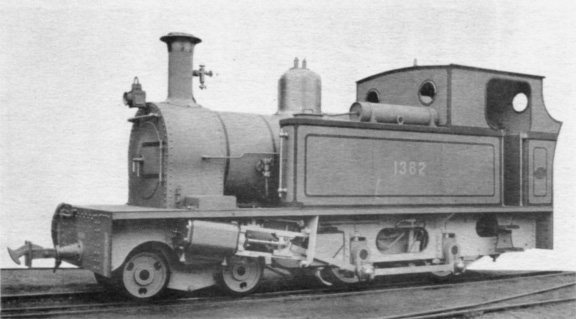
The following is from Samuel Aubrey, reporters@theborneopost.com on November 20, 2018,

Above: The Kuching Railway Terminus
building.
KUCHING: Sarawak Heritage Society (SHS)
is calling on all stakeholders to put on their thinking caps and explore how the
historic old railway track sites can be meaningfully and sensitively repurposed,
in line with a state-wide heritage assessment and management plan. Its president
Dato Sri Robert Jacob Ridu said SHS notes that the current Kuching City drainage
works around Jalan Masjid, Jalan Market and Jalan Lebuh Jawa have unearthed
tracks from the old railway line that used to serve Kuching in the early part of
the 20th century. He pointed out that this ‘re-discovery’ acts as a reminder
that the area is charged with history, and the railway track sites should be
treated as an important heritage area. “The fascinating story of Sarawak’s first
romance with railways should be remembered and shared with locals as well as
visitors to Sarawak. Our heritage represents the ‘Soul of Sarawak’ and its
diverse people. We need to treasure our heritage,” he said in a statement issued
yesterday. He said the unearthing of the old railway tracks is not really a
surprise as many are aware that the remnants of the tracks are still in place.
“But of greater significance should be the old Kuching Railway Terminus building
and Maintenance Depot, which today lie largely unused and dilapidated on Jalan
Masjid, across from the Brooke Dockyard,” he added. He said Second Rajah Sir
Charles Brooke was fascinated with railways and set up the Sarawak Government
Railway line, which officially opened on April 9, 1916.
The first phase of the railway track was completed in early 1915 and connected
the Kuching Railway Terminus to the 3rd Mile Bazaar. It crossed Green Road and
went along the road once called Jalan Keretapi (now part of Jalan Tun Ahmad
Zaidi Adruce). By end of 1915, it had been extended to the 7th Mile Bazaar (now
Kota Sentosa) and by mid 1916 it had been further extended to the 10th Mile
Bazaar (now Kota Padawan). It took 35 minutes to travel from Kuching to the 10th
Mile and the train made the trip five times a day.
There were three steam engines, named Bulan, Bintang and Jean, powered by coal
from the Sadong colliery. The rail service carried passengers, goods and
livestock. The passenger fare was 20 cents from central Kuching to the 10th Mile
Bazaar. “The Sarawak Government Railway line played a short but significant role
in Sarawak’s early history. When the road to the 7th Mile was completed, bus
services began to operate and over time, public usage of the railway line
dwindled. By January 1931, it ceased full-fledged service.
“During the Japanese Occupation (1941-45), the railway was used on and off for
the transportation of stone from the 7th Mile quarries as well as carriage of
passengers and POWs compelled to work in the quarries,” he said.

Page updated 15th July 2024.